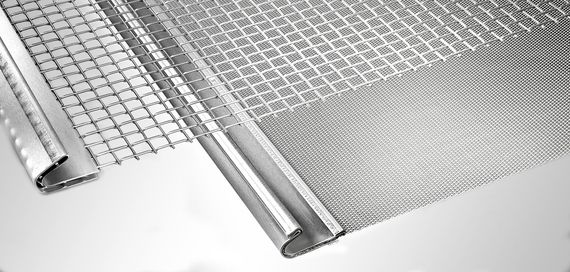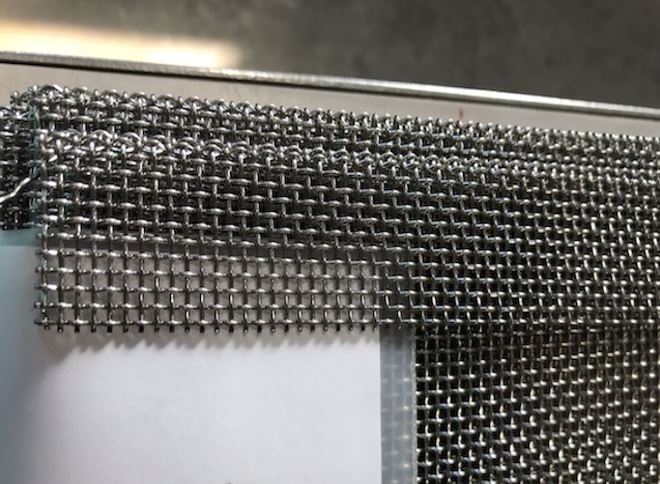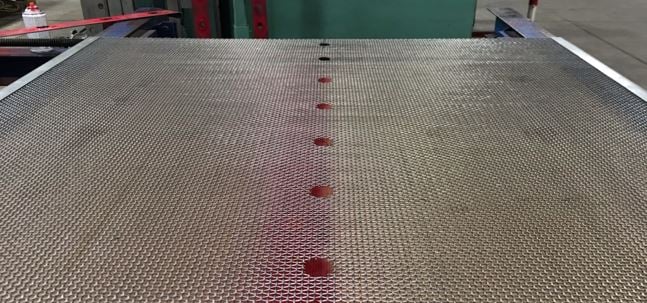Woven Wire Vibrating Screen Sections: How Its Made
Whether laying gravel down to furnish a driveway or creating asphalt roofing shingles, aggregate screening plays a critical role in many facets of life. But the uniformity of the aggregate you deliver is only as reliable as your equipment.
Therefore, many aggregate screening entities turn to the accuracy and durability of a well-put-together woven wire vibrating screen section. Having said that, what does it look like to fabricate a woven wire vibrating screen section?
W.S. Tyler has been a prominent manufacturer of premium fine wire cloth screen sections for over 80 years, helping customers screen their way to customer-satisfying results.
To help ensure you select screen sections that meet your expectations, we put the following article together to break down how woven wire mesh vibrating screens are made. You will learn:
- The definition of a woven wire vibrating screen section
- The standard components of a woven wire vibrating screens section
- The fabrication process of a woven wire vibrating screen section
- How you can customize a wire mesh vibrating screen section
- How wire mesh vibrating screen sections are shipped
What Is a Woven Wire Vibrating Screen Section?

Woven wire vibrating screen mesh, also referred to as wire mesh screen sections, are best defined as wire mesh sections designed to facilitate particle separation on a large scale. They are placed in vibrating screen machines that hold up to three decks of wire mesh screen sections, screening up to four tons of material per hour.
What Are the Components of a Woven Wire Vibrating Screen Section?
A typical woven wire vibrating screen section is made up of two key components. These are the wire mesh screen layer and a set of hooks.
Regarding the wire mesh, screen sections can consist of one or two layers. When using finer wire mesh specifications, a second layer is used to provide additional support.
The hooks are metal shrouds that enable them to be secured into the vibrating screen machine.
How Are Woven Wire Vibrating Screen Sections Made?
Woven wire vibrating screen sections start as rolls of industrial woven wire mesh. The supplier will take the roll with the correct mesh specifications and cut them into the dimension your vibrating screen machine calls for.
Now, when working with fine wire cloth screen sections, you may find that there is turnover on the exposed edges. A turnover is simply the folding of the non-hooked ends of the wire mesh.
This, in turn, prevents fraying.

Turnover is typically applied when the wire diameter of the screening mesh layer is .028” or smaller. That said, the turnover length can either be ½” or 1”, depending on the dimensions of the screen section and the requirements of your process.
From there, the hooks are attached to two sides of the mesh section.
These hooks are initially pieces of sheet metal bent at an angle. The mesh supplier will place one end of the wire mesh section into the bend and flatten the sheet metal, clamping the metal onto the mesh.
The clamped mesh section is then placed in a specialized machine that will bend the flattened sheet metal, forming the desired hook type.
Woven Wire Vibrating Screen Section Customization
To ensure you achieve optimal screening results, you can request to have custom fabrication applied to your woven wire screen sections. This includes overlapping, backing cloth, center holes, and rubber edging.
Overlap
Overlap refers to having your screen section fabricated to feature wire mesh layers that extend beyond the hook. This is typically done to close the gap between the screen section and the machine, preventing material loss.
To that end, a typical overlap is 1” in length; however, this length can be customized.
Backing Cloth
Baking cloth is an additional wire mesh layer that adds a supportive layer to the screening mesh layer of your screen section. That said, it also works to prevent your material from blinding the screening mesh layer.
When backing cloth is attached to the screen section, it features a small amount of slack. As a result, the backing cloth repeatedly collides with the screening mesh as the vibrating screen machine operates.
This cause any particles stuck in the openings of the mesh to become dislodged.
Center Holes

Center holes are just that, stamped holes that run along the center of the screen section. Customers usually request center holes to accommodate vibrating screen machines that feature a center shaft used to mount the screen section and vibrate the screen in an up and down motion.
Rubber Edging

Rubber edging is a peripheral that is placed on the edging of end tension screens. Placed on the non-hook sides of the woven wire vibrating screen section, rubber edging is used to close the gap between the edge of the section and the machine.
Again, much like overlap, this prevents material loss.
How Are Woven Wire Vibrating Screen Sections Shipped?
To properly screen various materials on a large scale, it is critical that your woven wire screen sections are free of any dents, tears, or other imperfections. With this in mind, care must be taken to ensure safe shipment.
After fabrication is complete, woven wire screen sections are typically placed in wooden crates. These crates are made to order to ensure that the sections fit snuggly and are well protected.
Now, while woven wire mesh is known for being a pliable material, most wire mesh suppliers will not roll wire mesh screen sections to be shipped. This is because rolling the mesh for shipment raises the potential for creating kinks in the mesh, ultimately resulting in premature wear and tear.
This concern becomes more prominent as the mesh specifications get finer.
Pick the Right Screening Media
Woven wire vibrating screen sections are wire mesh sections cut and fabricated to fit a vibrating screen machine and screen high volumes of various aggregates. A standard screen section is constructed out of a set of mounting hooks that are bent around either one or two wire mesh layers.
To ensure your screen sections can accommodate the needs of your screening process, you can request additional fabrication, including overlapping, backing cloth, center holes, and rubber edging.
But as stated above, the results you achieve are only as reliable as the equipment you use. While fine wire cloth allows you to screen trouble materials such as sand, they aren’t the best fit for larger aggregates.
This is why you must understand how the different screening media available compare.
With over 80 years of woven wire vibrating screens section experience under our belts, W.S. Tyler is here to remove the roadblocks that prevent you from achieving the results you need. In turn, you spend less time worrying about the dependability of your wire mesh and more time addressing other aspects of your operation.
To gain a better understanding of how fine wire cloth screen sections compare to the screen media designed for large aggregates, such as FLEX-MAT, read the following article:
About Ronnie Brown
Ronnie is the Content Writer for W.S. Tyler and has four years of experience as a professional writer. He strives to expand his knowledge on all things particle analysis and woven wire mesh to leverage his exceptional writing and graphic design skills, creating a one-of-a-kind experience for customers.



